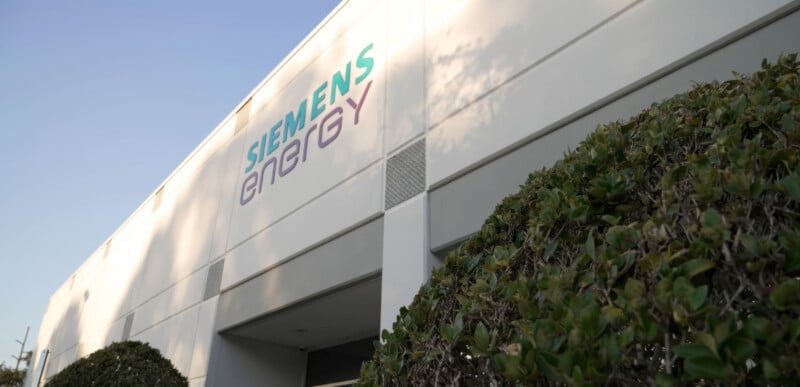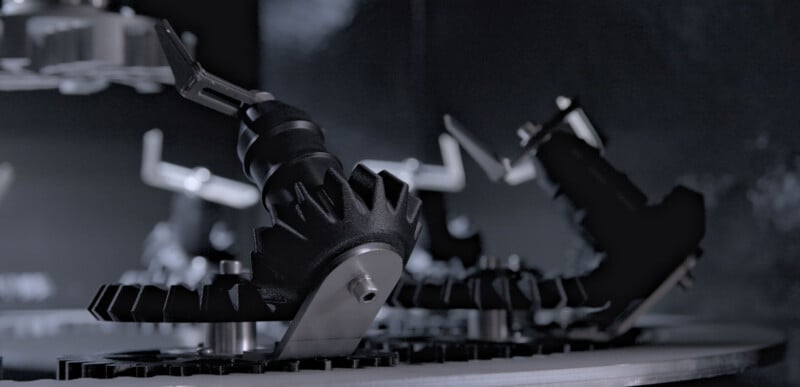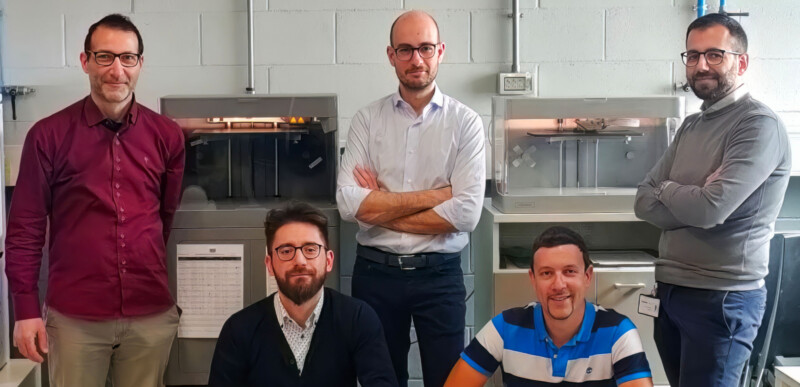
Siemens Energy Technology Application Center

The Customer
The Siemens Energy Technology Applications Center (TAC) is a world-class industrial rapid solution concept-to-completion center for the industrial market. It provides design, engineering and rapid prototyping solutions for industrial problems using a variety of technologies to achieve its objectives, including robotics, scanning, digital tools, and additive and subtractive manufacturing.
The TAC supports Siemens Energy’s global engineering business and solves design and engineering problems for a variety of clients. The most recent addition to the TAC’s portfolio of technologies is Simulation from Markforged, which enables engineers to virtually test the strength and stiffness of their parts within their Eiger workflow. It allows them to optimize the use and location of continuous fiber material added to prints to balance part strength with print time and cost.
Gas Turbine Vane Fixture
The Challenge
Siemens Energy produces large gas turbine engines that are used to generate electricity for customers worldwide. They contain multiple rings of static vanes that direct the flow of hot gases after the engine’s fuel is ignited. These Inconel vanes contain ceramic coatings that protect them against temperatures up to 4,000° F. Siemens Energy uses The Digital Forge to continuously test components and iterate design ideas that contribute to improving gas turbine efficiency.
One of the technologies used to validate new ideas at the TAC is Hot Air Thermography. During this technique, hot air is passed through the vane’s internal cooling channels while an infrared camera is used to image the result of the thermal excitation on the surface of the part. Engineers are looking for areas of excessive wear or degradation in the ceramic coating, as well as any evidence of stress elongation.
Vanes, which average 15 lbs. in weight and up to 3 ft. in length, must be held securely in a fixture as air up to 600° F is passed over it to simulate engine operating conditions. If a fixture drops a vane, it could cause thousands of dollars of damage to it. Not only that, but it would be hard to determine if the damage was caused by routine engine wear or from the vane falling to the floor.
Previously, a metal and gasket fixture was used to hold the vanes during these tests. But these fixtures took up to 6 weeks to machine and the silicone gaskets cost up to $10,000 to mold. So, the TAC team started to produce them in Onyx with a high percentage of continuous carbon fiber to ensure they would be strong enough to securely hold the vanes. But this sometimes resulted in longer than desired print times and wasted material.

The Solution
Simulation from Markforged enables the TAC team to create durable fixtures in a more time- and cost-effective manner. When they had the opportunity to beta-test a version of Eiger that incorporated the new Simulation tool, they saw it as an opportunity to optimize their custom fixtures for strength and print time.
Simulation revealed that part designers were frequently specifying more carbon fiber than was needed to achieve the required strength of the fixtures, because they didn’t have any confidence on the impact Continuous Fiber Reinforcement (CFR) gave to the strength or stiffness of their parts. Simulation has helped them overcome this knowledge barrier by giving them greater confidence in the impact CFR adds to their designs. This enabled them to reduce the use of carbon fiber by as much as 60% and cut print times by up to 75%.
The TAC team also discovered that Simulation could perform its design optimizations in a fraction of the time required to have an engineer run the fixture design through traditional Finite Element Analysis (FEA). Simulation from Markforged guides the user through the application of boundary conditions and is optimized for the Markforged materials used in the part. Further, it enables the TAC team to efficiently perform this structural analysis within their Eiger workflow.


Robot Arm Backpack
The Challenge
For some types of precise inspection applications, robotic arms are used to position sensors close to the parts being tested. The backpack is a tray that sits on top of the robot’s “forearm.” It contains programmable logic controllers, sensors, air systems and other components to support the end-of-arm sensors. The TAC creates various backpack configurations to accommodate different sensor packages. During application development, the number and type of sensors located on the robot end effector may vary, causing a change in the backpack configuration.
Traditional metal-fabricated backpacks take a significant time to manufacture, limiting how often the backpack design can be updated during the project. A drawback of using 3D printing for large backpacks is that they are generally more flexible than traditional metal backpacks and do not resist transferring unwanted inertial feedback to the robot arm.

The Solution
Producing the robot arm backpacks in Onyx enables the TAC team to iterate the design of the backpack quickly. For example, they can easily add new mounting points and other required features as needed for each new version. Using Simulation from Markforged, optimal structural properties can be quickly achieved, balancing fabrication time and the need for more rigid structures. Simulation allows the TAC team to see where weaknesses are in the design before the print.


The Future
The TAC team has embraced Simulation from Markforged because it offers them several key benefits. First, it provides them with fast and accurate structural analysis of part designs, enabling them to balance the need for fast print times with the requirement of structurally sound parts. This data also helps them make the case for the structural capabilities of parts produced by 3D printing during their discussions with customers.
The TAC team has also discovered that Simulation from Markforged can help them determine the optimal print orientation for each part, which not only impacts part strength but also print time.
As this software evolves, the TAC team is convinced that it will become an integral tool in the development of Fused Filament Fabrication (FFF) 3D printed parts.


MarkforgedのSimulationのご紹介

How BMF GmbH uses Digital Source

PUNCH Torino
All of the blogs and the information contained within those blogs are copyright by Markforged, Inc. and may not be copied, modified, or adopted in any way without our written permission. Our blogs may contain our service marks or trademarks, as well as of those our affiliates. Your use of our blogs does not constitute any right or license for you to use our service marks or trademarks without our prior permission. Markforged Information provided in our blogs should not be considered professional advice. We are under no obligation to update or revise blogs based on new information, subsequent events, or otherwise.
Never miss an article
Subscribe to get new Markforged content in your inbox